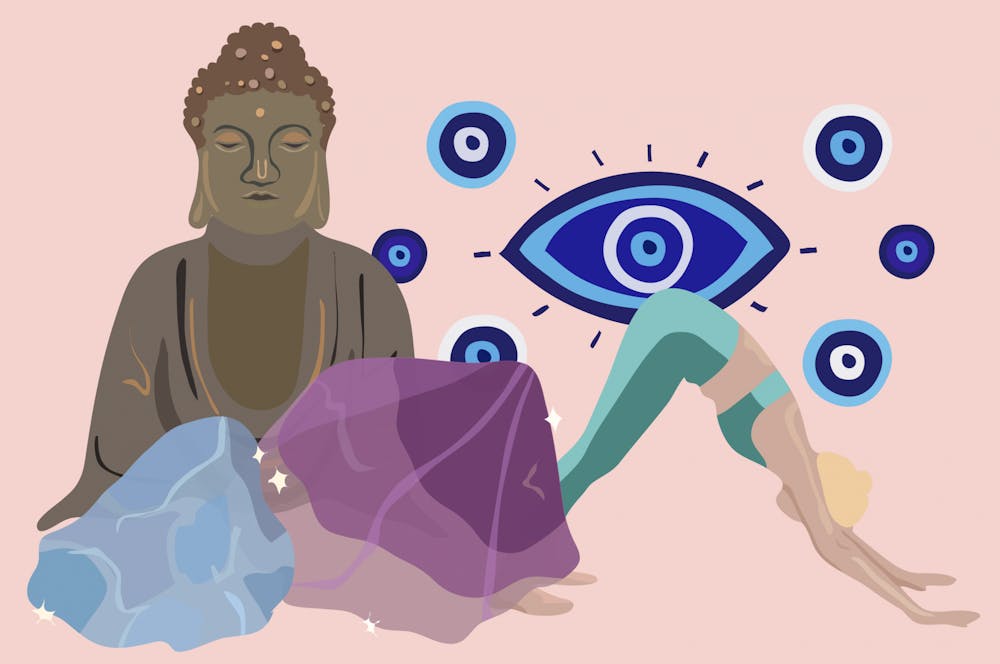From expensive yoga classes to acupuncture, health and self–care practices have taken mainstream culture by storm. Globally valued at around $4.2 trillion, the wellness industry has become our obsession, and it seems like it's here to stay.
Dipping your toes into activities like reiki and oil pulling can be a great way to de–stress from time to time. However, we haven't paid nearly enough attention to where these exercises really come from—as well as how their commodification by a primarily white wellness industry disrespects the cultures that created them.
Take yoga for example. Movie–star–turned–goop–founder Gwyneth Paltrow once told a yoga instructor, “You have this job because I've done yoga before," suggesting that she—a white woman—was the reason behind the popularization of yoga in wellness circles.
Yet this statement couldn’t be further from the truth. Yoga originated in Indian culture, and there's historical evidence that it was practiced over 2000 years ago. Practitioners use it to bring together the mind and the body, allowing them to align themselves with the universe. It's not only a beneficial health practice, but it also carries great cultural weight for Indian people around the globe.
But as yoga has become more mainstream, non–Indian practitioners have begun to focus on the fitness and “trendy” aspects of yoga rather than its original reflective purpose. Instead of being centered on self–awareness and self–love, yoga is commonly seen as a stylish way to get fit. It’s now associated with thin, wealthy white women. “Om” merch is sold everywhere. Just like how Paltrow claims that she made yoga “trendy,” many people now see the practice as a mere commodity rather than as an important spiritual practice that it has been for thousands of years.
Because yoga is now associated with fitness and trendiness, classes have become extremely popular—and thus expensive. With the cost of mats, classes, and gear adding up, yoga has become increasingly exclusive to whiter, more affluent spaces, which creates barriers for communities of color to access it and ignores the history behind it. With 77.1% of all U.S. yoga instructors identifying as white, the face of yoga in our country has become upper–class white women.
Yoga isn't the only traditional exercise that has since been appropriated by the wellness industry. Practices such as traditional Chinese medicine and burning sage have been commodified, exoticized, and exploited in a similar manner—rebranded as a way for white people to participate in self–care.
Traditional Chinese practices like gua sha and cupping were once written off as strange and foreign in the United States. Now, lifestyle outlets market gua sha as “clean beauty,” while athletes everywhere use cupping—it's a stark contrast to the ridicule that many who introduced these traditions to the country faced in the past.
Likewise, brands like Anthropologie and Urban Outfitters now sell smudge kits, advertising them as “cleansing” without providing context on how the practice of burning herbs is a ceremonial purifying ritual in many Indigenous cultures. Indigenous religious and cultural activities like smudging were once outlawed and persecuted by various governments, but burning sage is now seen as fashionable when aesthetically packaged and removed from its Indigenous origins.
In the case of the wellness industry, it's important to understand the difference between consumption and contribution. Merely consuming a culture for its aesthetic value and what it could add to your self–care routine is ignorant at best and, at worst, downright harmful to the communities that these wellness practices come from.
From the white yoga community ignoring the COVID–19 crisis in India to the $90 virtual workshops on how to gua sha your face, the colonization of ethnic wellness is a form of cultural appropriation that labels non–Western cultures as mere trends.
With white women like Paltrow taking credit for new wellness “trends” and serving as the faces of the self–care movement, it's clear that the wellness industry excludes people of color through cultural disrespect and commodification. In order to appreciate the diversity of the new wellness wave, we need to pay homage to the cultures that created it.

